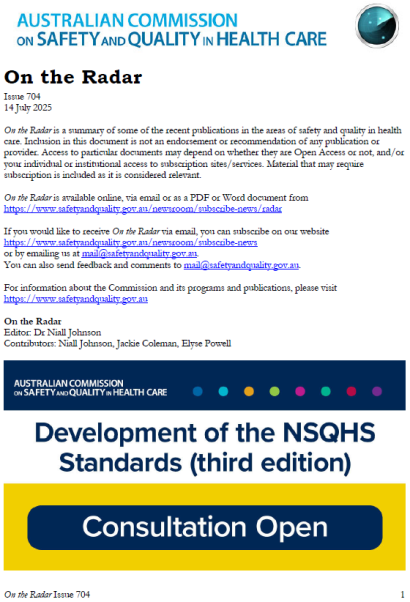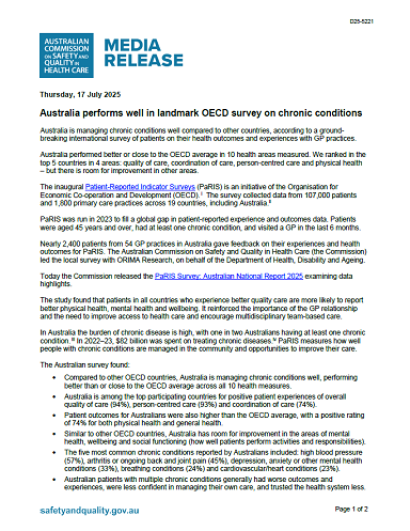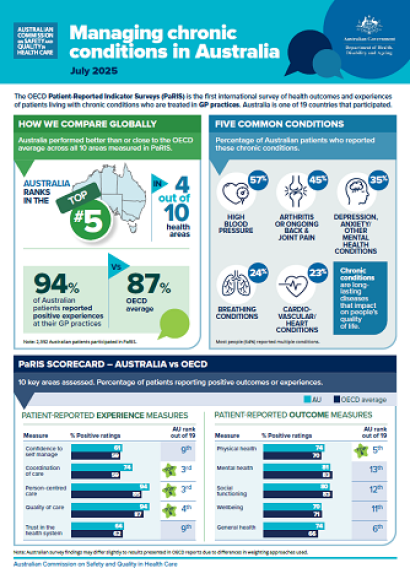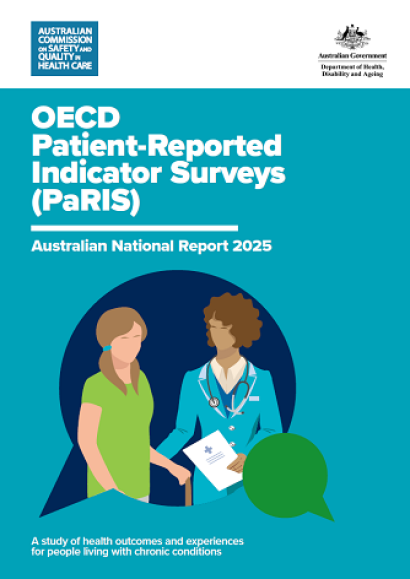For 15 million Australians living with a chronic health condition – the findings of a landmark international survey offer insights on how to improve care, so these patients not only survive but thrive.
MEDIA RELEASE
Australia is managing chronic conditions well compared to other countries, according to a ground-breaking international survey of patients on their health outcomes and experiences with GP practices.
Australia performed better or close to the OECD average in 10 health areas measured. We ranked in the top 5 countries in 4 areas: quality of care, coordination of care, person-centred care and physical health.
BOARD CHAIR MESSAGE
On behalf of the Commission, I am delighted to congratulate five Australian health services that have been recognised for demonstrating excellence in implementing one of our national Clinical Care Standards.
- Professor Christine Kilpatrick AO, Board Chair
We would value your support to promote the 10th Anniversary Clinical Care Standards Excellence Awards.
Five health services from across Australia have been recognised with Excellence Awards in recognition of their effective implementation of a national Clinical Care Standard.
This issue includes items on consultation on the third edition of the National Safety and Quality Health Service Standards, nursing, discharge summaries, oral healthcare, co-design, mental health, artificial intelligence, health communication, and more. Along with the latest from International Journal for Quality in Health Care, BMJ Quality & Safety, Healthcare Policy, and Health Affairs and the UK’s NIHR.
Australia is managing chronic conditions well compared to other countries, according to a groundbreaking international survey of patients on their health outcomes and experiences with GP practices.
Released 17 July 2025
The OECD Patient-Reported Indicator Surveys (PaRIS) is the first international survey of health outcomes and experiences of patients living with chronic conditions who are treated in GP practices.
This infographic shows how Australia compares globally, features a data scoreboard of 10 key areas assessed, and provides key data insights on the GP-patient relationship and digital health.
The Commission is releasing the PaRIS Survey: Australian National Report on 17 July 2025.
The Australian National Report on the OECD Patient-Reported Indicator Surveys (PaRIS) outlines key findings from the first international survey of health outcomes and experiences of patients living with chronic conditions who are treated in GP practices.
This 15-page report summarises data findings across 10 health areas, and outlines key insights for improving the quality of care for people living with chronic conditions.
Released by the Commission on 17 July 2025
Commencing today, the Commission is undertaking broad public consultation to inform the development of the NSQHS Standards (third edition), in collaboration with the healthcare system and community representatives.




